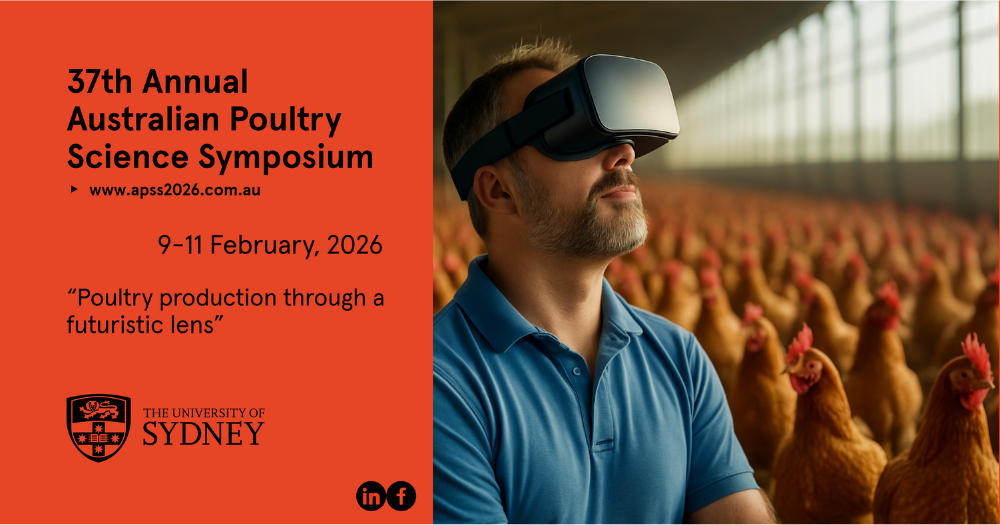Major Challenges Facing the Poultry Industry Over the Next Two Decades and Beyond
By Mingan Choct
The poultry industry is the No.1 supplier of quality animal protein sources for human consumption. It does not matter whether you focus on the ethics of food production or the essence of food production, from a global food security and sustainability point of view, it is essential have a prosperous and advanced poultry industry.
Recently, the Poultry Research Foundation of The University of Sydney, supported by AgriFutures Australia and BEC Feed Solutions, organised a poultry industry think thank meeting to discuss the key challenges that will shape the poultry industry during the next 20 years. It was well attended by leaders of industry and academia in Australia.
The three key challenges identified are: People, Collaboration and Communication.
In this Issue of Poultry@Sydney, I will discuss the No.1 challenge: People and will discuss the other challenges in subsequent Issues of our newsletter.
This No.1 challenge has been looming for quite sometime. Firstly, finding people to do the day-to-day operation in the industry is difficult because most young people think the poultry industry is not sexy and shy away from entering the industry. The situation is not likely to improve greatly in the future. Thus, the onus is on the industry to plan for its workforce, taking into account of technological advancement, ie., how many jobs will be replaced by artificial intelligence (AI) and how the industry can prepare for it in terms of the way a poultry farm operates; what the migration intake of the country looks like; and the types of skills required to run a future poultry farm.
Secondly, finding, attracting and retaining scientific and industry leaders in the industry has become hard because the training and research providers are struggling to offer courses and conduct research due to lack of funding. This is related to two main developments over the years:
a) Australian universities have been increasingly corporatised, meaning they support courses that attract a large number of students (in particular, international students) and research groups that bring in big grants. Along the way, the “National Interest” criterion no longer plays a role in our higher education system. If it did, it would think about supporting an area such as poultry research and training because the poultry industry is a key pillar of Australia’s food security system. The consequences of this are a major decline in postgraduate students interested in poultry research and undergraduate students specialising in poultry science. This has led universities to put massive pressure on poultry science-heavy courses to rationalise, due to low enrolment numbers. Perhaps this is not unique to the Australian Higher Education System, I am afraid.
b) The pool of industry funding of poultry research through the Australian government’s R&D levy system is limited with little increase over the years. There is also a view, rather similar to that on climate change, by some that as a small country, Australia accounts for a very small proportion of the world population and hence we do not need to fund research as a priority. Indeed, one of the key reasons the Australian national productivity slowdown has been identified as a slowed rate of innovation and technology adoption by companies.
This challenge is the priority for everyone involved in the poultry industry, be it research, education or production, and cannot be left in no-man’s land. It is a priority that all tiers of our government should take notice and bring it to our national agenda.
Regards, Mingan
Latest news
Our events
- The Countdown is on for APSS 2026With just over 120 days until APSS 2026, planning for the 37th annual Australian Poultry Science Symposium is progressing smoothly. Next year’s event will return to the University of Sydney Business School – Belinda Hutchinson Building (H70) on the Camperdown Campus, and we’re excited to once again welcome delegates for 2.5 days of presentations, posters, networking, and industry engagement.
Connect with us:


